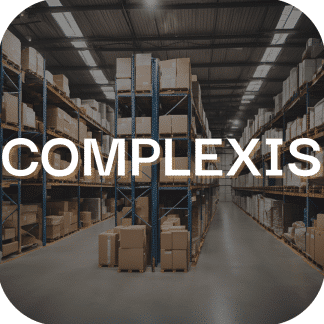Description
Cross-Department Collaboration: Aligning Supply Chain Activities with Business Goals
Introduction
In today’s competitive business environment, effective supply chain management is critical for organizational success. One of the most important aspects of supply chain management is cross-department collaboration. Aligning supply chain activities with overall business goals requires seamless coordination between various departments, such as production, sales, finance, and customer service. This article explores the significance of cross-department collaboration, the challenges faced, and strategies to enhance alignment with business objectives.
The Importance of Cross-Department Collaboration
Cross-department collaboration ensures that all parts of the organization work together towards common business goals. It brings numerous benefits:
- Enhanced Efficiency: Streamlined processes and better communication reduce redundancies and improve operational efficiency.
- Improved Decision-Making: Sharing information and insights across departments leads to more informed and effective decision-making.
- Increased Agility: A collaborative environment enables the organization to respond quickly to market changes and customer demands.
- Cost Reduction: Identifying and eliminating inefficiencies through collaboration helps reduce operational costs.
- Customer Satisfaction: Coordinated efforts ensure that customer needs are met consistently, enhancing overall satisfaction.
Key Areas of Cross-Department Collaboration
- Production and Supply Chain
- Objective: Ensure that production schedules align with supply chain capabilities and inventory levels.
- Collaboration Points: Forecasting demand, managing inventory levels, and scheduling production runs.
- Benefits: Reduces stockouts and overproduction, optimizing inventory levels and production efficiency.
- Sales and Supply Chain
- Objective: Align sales forecasts with supply chain planning to meet customer demand.
- Collaboration Points: Sharing sales forecasts, coordinating promotions, and managing customer orders.
- Benefits: Improves demand forecasting accuracy, reduces lead times, and enhances customer satisfaction.
- Finance and Supply Chain
- Objective: Align financial planning with supply chain operations to optimize costs and cash flow.
- Collaboration Points: Budgeting, cost management, and financial reporting.
- Benefits: Ensures efficient allocation of resources, enhances cost control, and improves financial performance.
- Customer Service and Supply Chain
- Objective: Ensure that supply chain activities support customer service goals and enhance customer experience.
- Collaboration Points: Managing order fulfillment, handling returns, and addressing customer inquiries.
- Benefits: Increases customer satisfaction, reduces return rates, and improves service levels.
Challenges in Cross-Department Collaboration
- Communication Barriers
- Departments often operate in silos, leading to poor communication and misunderstandings.
- Solution: Implement regular inter-departmental meetings and use collaborative tools to facilitate communication.
- Conflicting Priorities
- Different departments may have conflicting goals and priorities.
- Solution: Establish common goals and KPIs that align with overall business objectives.
- Lack of Integrated Systems
- Disparate systems and data sources can hinder effective collaboration.
- Solution: Invest in integrated IT systems that provide a single source of truth and enable real-time data sharing.
- Resistance to Change
- Employees may resist changes required for better collaboration.
- Solution: Foster a collaborative culture through leadership support, training, and incentives.
Strategies to Enhance Cross-Department Collaboration
- Establish Clear Goals and Objectives
- Define clear, shared goals that align with the organization’s overall strategy. Ensure all departments understand how their roles contribute to these goals.
- Use Collaborative Tools and Technology
- Implement collaboration tools such as ERP systems, project management software, and communication platforms to facilitate information sharing and coordination.
- Foster a Collaborative Culture
- Encourage teamwork and collaboration through leadership, team-building activities, and open communication channels. Recognize and reward collaborative efforts.
- Implement Regular Meetings and Reporting
- Schedule regular cross-departmental meetings to discuss progress, address issues, and share insights. Use reporting systems to track performance against shared KPIs.
- Invest in Training and Development
- Provide training programs that enhance collaborative skills and cross-functional understanding. Encourage employees to learn about other departments’ roles and challenges.
- Leverage Data and Analytics
- Use data analytics to gain insights into performance and identify areas for improvement. Share relevant data across departments to support decision-making.
Conclusion
Cross-department collaboration is essential for aligning supply chain activities with business goals. By breaking down silos and fostering a collaborative culture, organizations can enhance efficiency, improve decision-making, and achieve better overall performance. Implementing the right strategies and tools is key to overcoming challenges and reaping the benefits of effective collaboration. Through continuous effort and commitment, businesses can create a cohesive and agile supply chain that supports their long-term success.




